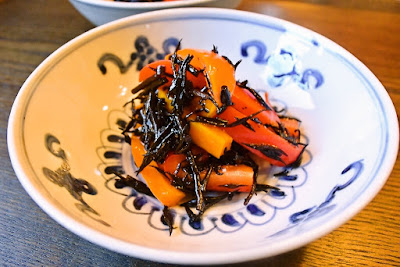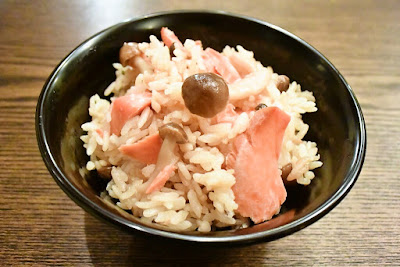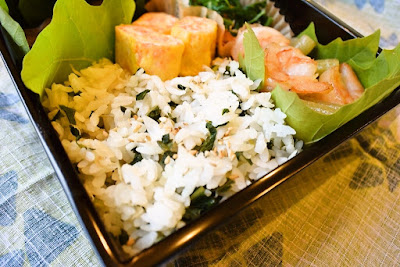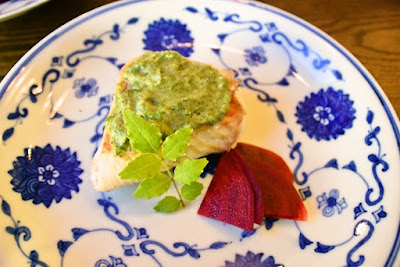A specialty of Toyama, my hometown prefecture, this pressed sushi with
masu salmon is wrapped in bamboo leaves and comes in a
magewappa round wooden container. It has also been a favorite
ekiben (lit. train station bento) of Toyama since 1912, and is a popular souvenir with tourists and business travelers.
Masuzushi is traditionally made with
sakura masu (
Oncorhynchus masou) that come back to the main river running through the prefecture to the Sea of Japan, and more than a dozen long-established
masuzushi specialty shops are found near the river off the city center even today. Each shop's
masuzushi has slightly different characteristics, and many locals have their favorite shop. Salmon is first treated with salt and then sugar and vinegar, and finally assembled with sushi rice and bamboo leaves. Yet the sushi is not ready for consumption at this point, as it must be pressed for hours to achieve the delicate blend of taste, aroma and texture.
The recipe below is my most successful attempt so far to recreate the
masuzushi from a shop I like in Toyama. I use a stainless flour sifter and pie mold bottom as a
magewappa substitute, and dried bamboo leaves for
chimaki zongzi as a substitute for fresh bamboo leaves.
Whole recipe:
1,139 calories; 58.5 g protein; 10.4 g fat; 187.0 g carbohydrate; 185.5 g net carbs; 354 mg sodium (with shiokoji salted rice malt for sushi rice; 674 mg with kosher salt for sushi rice); 99 mg cholesterol; 1.5 g fiber
1/4 of recipe:
285 calories; 14.6 g protein; 2.6 g fat; 46.7 g carbohydrate; 46.3 g net carbs; 88 mg sodium (with shiokoji salted rice malt for sushi rice; 169 mg with kosher salt for sushi rice); 25 mg cholesterol; 0.4 g fiber

















































